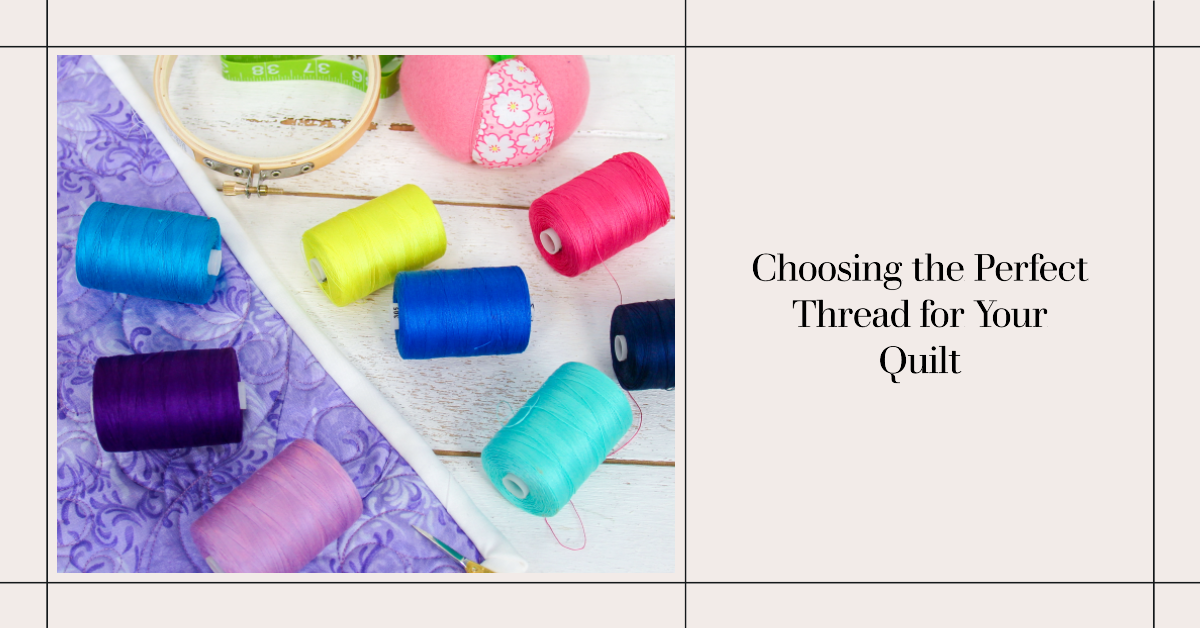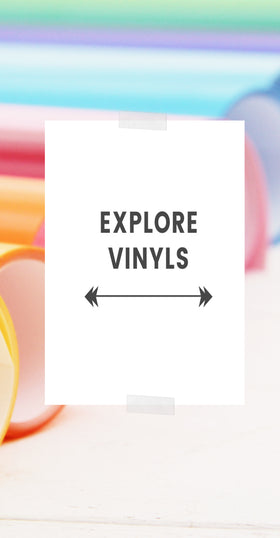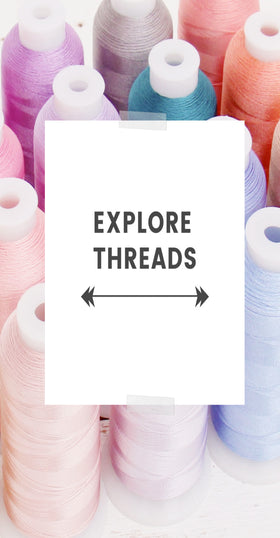Arrives in 2-6 Days

Choosing the Right Thread for Quilting
Today, we're going to dive into the colorful world of threads and help you choose the perfect one for your quilting projects.. Whether you're a seasoned quilter or just starting, the right thread can make all the difference.
Understanding Thread Types
First things first, let's talk about the different types of threads available for quilting. The two most popular options are long staple cotton thread and high sheen polyester thread. Both have their unique advantages and can add a special touch to your quilts.
Long Staple Cotton Thread: The Matte Marvel
If you're looking for a thread that blends seamlessly with your fabric and gives your quilt a soft, matte finish, long staple cotton thread is the way to go. Here's why:
-
Natural Look: Cotton thread has a natural, matte appearance that complements the texture of your fabric, making it a great choice for traditional quilts.
-
Durability: Long staple cotton thread is made from longer cotton fibers, which means it's less likely to fray or break compared to regular cotton thread. Your quilt will stand the test of time!
-
Easy to Work With: Cotton thread is a favorite among quilters because it's easy to work with. It doesn't slip or stretch, making it perfect for precise stitching.
-
Comfort: Cotton thread is soft and breathable, making it ideal for quilts that will be used for snuggling up on chilly nights.

High Sheen Polyester Thread: The Glossy Gem
If you're looking to add a touch of glamour to your quilt, high sheen polyester thread is your best bet. Here's why:
-
Shiny Finish: Polyester thread has a high sheen, which means it reflects light and adds a glossy finish to your quilt. It's perfect for adding a pop of shine to your quilted patterns.
-
Strength: Polyester thread is known for its strength and durability. It's resistant to abrasion, making it a great choice for quilts that will see a lot of use.
-
Color Retention: Polyester thread holds its color well, even after multiple washes. Your quilt will look vibrant and fresh for years to come.
-
Versatility: High sheen polyester thread comes in a wide range of colors and thicknesses, giving you endless options for creative quilting.

Quilting with Specialty Threads: Adding a Unique Touch
If you're looking to add some extra flair to your quilting projects, specialty threads are the way to go. These threads come in a variety of textures, colors, and finishes, allowing you to create truly unique and eye-catching quilts. Let's explore some of the most popular specialty threads and how to use them in your quilting projects.

Metallic Thread: Shine On!
Metallic thread is perfect for adding a touch of sparkle and shine to your quilts. It's made by wrapping a thin metallic foil around a core thread, usually made of polyester or nylon. Here's what you need to know:
-
Use a Special Needle: Metallic thread can be a bit finicky to work with. To prevent breakage, use a needle with a larger eye, like a metallic or topstitch needle.
-
Slow Down: Metallic thread is more prone to breakage, so it's a good idea to slow down your sewing machine and take your time.
-
Test First: Before you start quilting, do a test run on a scrap piece of fabric to make sure your tension settings are just right.
Multicolor Thread: A Rainbow of Possibilities
Multicolor thread, also known as variegated thread, is a fun way to add a burst of color to your quilts. It's made by dyeing the thread in multiple colors, creating a beautiful gradient effect. Here's what you need to know:
-
Choose the Right Pattern: Multicolor thread works best with quilting patterns that have longer, continuous lines, like stippling or meandering.
-
Play with Color: Multicolor thread comes in a wide range of color combinations, from subtle to bold. Choose one that complements your fabric and adds a pop of color to your quilt.
Invisible Thread: The Secret Stitcher
Invisible thread, also known as monofilament thread, is perfect for quilting when you want the stitches to blend in with the fabric. It's made from thin, transparent nylon or polyester. Here's what you need to know:
-
Use a Smaller Needle: Invisible thread is very thin, so it's best to use a smaller needle, like a size 60/8 or 70/10.
-
Adjust Your Tension: Invisible thread can be a bit slippery, so you may need to adjust your tension settings to get the perfect stitch.
-
Be Gentle: Invisible thread can be prone to stretching, so be gentle when handling it and avoid pulling it too tight.
When it comes to choosing the right thread for your quilting project, it all boils down to the look and feel you want to achieve. If you're going for a natural, matte finish, long staple cotton thread is your best bet. On the other hand, if you want to add a touch of shine to your quilt, high sheen polyester thread is the way to go.
Remember, there's no one-size-fits-all answer. The best thread for your quilt is the one that brings your vision to life and makes you happy. So, go ahead and experiment with different threads, and most importantly, have fun quilting!


